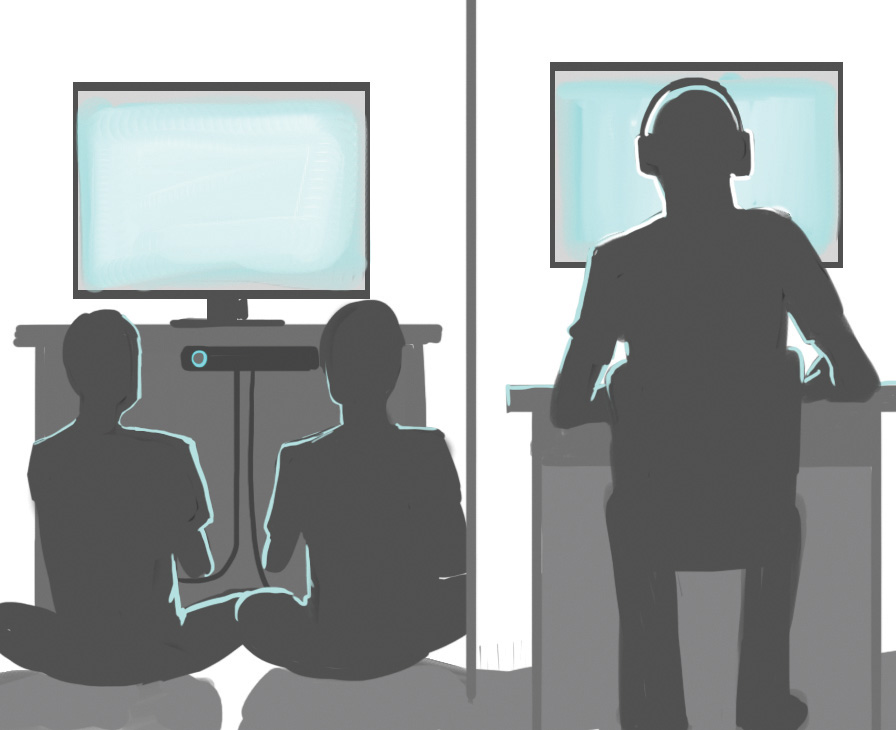
Weslie Skammel
Illustration by Andria Chen
If you’re anything like me, you probably have many fond memories of gathering around with friends to play an exciting game of Super Smash Bros. or playing through the co-operative campaign of a Call of Duty game. However, the omission of a co-operative campaign in the recently released and highly anticipated game Halo 5: Guardians has raised many discussions about the importance of local split-screen multiplayer and how its inclusion affects games. While split-screen multiplayer is an enjoyable experience that can enrich a game, there are also a number of reasons why modern developers may choose more and more often to not implement it.
One major reason developers choose not to include split-screen in games is that its inclusion can force developers to compromise on other aspects of the game. This very reason was a large factor in why split-screen was left out of Halo 5, as franchise development director of Halo Frank O’Connor said, “[T]he time spent optimizing and addressing split-screen-specific issues would take focus from building other parts of the game.” Some games may also have performance issues or be forced to lower graphics quality to accommodate split-screen since it forces the game to render more action on the screen at any given time.
Another possible reason for the decline of split-screen in games is that some games don’t necessarily benefit from it, and the inclusion of a poor split-screen mode can cause a drop in the perceived quality of a game. One example is the team-based shooter Splatoon released by Nintendo in 2015. The game includes an interesting and unique single-player campaign as well as a tactical, well-balanced online multiplayer component. However, its split-screen multiplayer is a frustrating one-versus-one mode that feels entirely pointless beyond a quick laugh with a friend.
Split-screen modes can also compress the view in a way that makes the game difficult to play, especially when four players are sharing a small or medium television further cluttered by a user interface. In first-person shooters and other games that rely on positioning players looking at each other’s screens can also cause disputes and result in a fun gaming session turning sour.
Split-screen multiplayer is also increasingly being seen as an unnecessary feature since online multiplayer has become so ubiquitous. When split-screen multiplayer was first conceived it was the only way for people to play together, but now convenient online voice chats and online multiplayer included in nearly all games can effectively simulate the experience of playing together in-person. The games that are excluding split-screen are also mostly games which are becoming increasingly focused on online multiplayer.
While these factors may make the prospects for split-screen multiplayer seem poor, not all hope is lost. The games that are beginning to phase out split-screen multiplayer are mostly shooter games which often had questionable split-screen modes to begin with, and also include robust online multiplayer experiences. There are still many games on the market that provide a strong focus on split-screen gameplay, especially a number of offerings from Nintendo. While many may be disheartened by the removal of split-screen from one of their favorite series, those seeking fun games to play in-person with their friends still have a variety of options available to them, and this will likely continue to be the case in the future.










